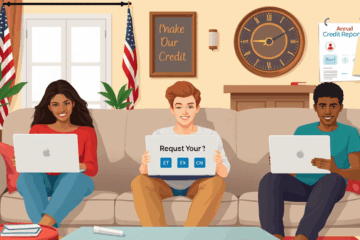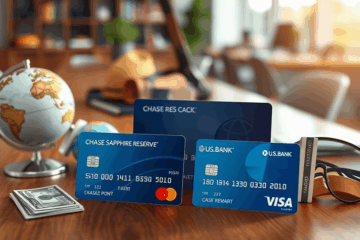Ways to Get Credit Sans Income Proof
Credit Options can often seem limited, especially when you lack proof of income.
However, there are various financing avenues worth considering.
Boost your financial freedom today
Find the perfect loan solution now
Take the first step to your goals
This article will delve into the different types of loans available, including secured and unsecured loans, as well as peer-to-peer lending and options that bypass traditional income verification.
By understanding these alternatives, you can make informed decisions tailored to your unique financial situation and enhance your chances of obtaining the credit you need.
Fundamentals of credit approval without income verification
Obtaining credit without proof of income means getting approved for a loan or line of credit without showing traditional income documents like pay stubs or tax returns.
This approach is often used by self-employed individuals, retirees, gig workers, or others with non-traditional income sources.
It matters because many borrowers have legitimate ability to repay but lack standard proof.
Lenders assess risk in different ways to ensure a borrower’s creditworthiness even without income verification.
For example, lenders might use Fairstone’s alternative assessment strategies to understand a borrower’s financial stability.
Borrowers typically provide other financial indicators that reflect repayment capability, helping lenders to reach a safe credit decision without regular documentation.
Common methods include
- Asset verification
- Credit history review
- Bank statement analysis
- Debt-to-asset ratio evaluation
- Utilizing high credit scores
Maintaining a strong credit profile is essential because lenders often rely heavily on it to justify the approval of credit in the absence of income proof
Secured credit solutions
Secured credit options allow borrowers to qualify even without showing income verification by using collateral such as vehicles, savings accounts, or other valuable assets.
This collateral reduces the risk for the lender, making it easier to obtain funding when income proof may be unavailable.
For instance, a secured personal loan backed by a vehicle or a cash deposit can offer low interest rates along with flexible eligibility.
Relevant text, lenders feel more secure because they can recover their money by claiming the collateral if the borrower defaults.
This is especially valuable for individuals with inconsistent earnings or no formal proof of income, offering a way to access credit despite financial documentation gaps.
Now, comparing secured and unsecured loans shows key differences:
| Type | Income Proof | Risk Level |
|---|---|---|
| Secured | Not required | Lower |
| Unsecured | Often required | Higher |
This contrast highlights how secured credit offers lower hurdles and safer lending conditions for both borrower and lender
Peer-to-peer and community lending opportunities
Peer-to-peer and community lending platforms such as LendingClub and Upstart have transformed borrowing by bypassing traditional banks and often eliminating the need for income verification.
These platforms connect borrowers directly with individual or institutional investors, relying on alternative data like credit history, education level, and employment patterns to assess creditworthiness.
By not requiring strict income documentation, they provide access to capital for freelancers, gig workers, and others with non-traditional earnings.
According to LendingClub experts, this flexibility makes borrowing more inclusive and efficient for underserved groups.
However, the lack of income proof can also lead to higher interest rates or lower loan amounts, depending on risk evaluations.
Platforms like The Funding Family warn that while accessibility is a benefit, the borrower’s overall financial health must still support future repayments
Unsecured credit with flexible income criteria
Unsecured credit solutions that may waive income verification are designed for borrowers with non-traditional employment or those in financial transition.
These credit products weigh factors like credit history, existing assets, and financial behavior over documented income.
Fintech-driven evaluations, digital banking footprints, and alternative data sources allow more flexible credit assessments, especially for applicants with solid credit scores but irregular income streams.
Many products in this space offer fast approvals and minimal documentation requirements, making them accessible in urgent situations
- Credit-builder loans help improve your credit score by reporting payments, even without proof of traditional income
- Fintech credit accounts such as those offered by neobanks may base approval on cash flow analysis instead of pay stubs
- Microloan programs from community lenders or nonprofit organizations offer access with flexible qualifications
Risk of high interest rates and hidden fees remains significant, especially in short-term products targeting borrowers without income proof.
Missing payments could result in serious credit damage, and borrowers must scrutinize loan agreements for relevant conditions like origination fees, prepayment penalties, or balloon payments
Selecting reliable lenders and ensuring safety
Step 1: Verify lender credentials by checking with official agencies such as your state’s financial regulatory authority.
Lenders offering credit without income verification must still hold valid licenses.
You can confirm this through your state’s licensing database and by searching on the Better Business Bureau, which provides complaint history and business ratings
Step 2: Review the lender’s transparency.
Reputable lenders clearly outline loan terms, fees, and repayment schedules.
Avoid those that make aggressive promises or rush consumers to sign
Step 3: Run a background check using trusted sources like the Consumer Financial Protection Bureau (CFPB).
This federal agency offers searchable databases and educational resources to help identify scams or unlawful lender practices
Step 4: Analyze consumer reviews and ratings but cross-reference with more reliable platforms instead of only relying on testimonials found on a lender’s own site.
Objective reviews on government or financial watchdog sites offer more accurate insight
Step 5: Protect your personal data.
Never provide your Social Security number or bank details without confirming the lender’s security measures and identity.
Secure websites start with https and include privacy policies that explain data usage
By taking these steps, you not only increase your safety but also make sure the lender offering credit aligns with ethical and legal standards
In conclusion, exploring diverse credit options can empower you to find suitable financing solutions, even without traditional income proof.
By researching various lenders and loan types, you can navigate your borrowing needs with confidence.





